As a nutritionist, I hesitate throwing around that name “superfood”, but quinoa comes close to what one might define as a superfood. The seed (yes, quinoa is a seed not a grain!) is jam-packed with nutrition. It’s gluten free, easy to cook and season, simple to store, and is a versatile ingredient that can be used in a wide range of different recipes, from a kale salad, to crunchy homemade granola, and vegetarian stuffed peppers. Keep reading for more of my input on quinoa.
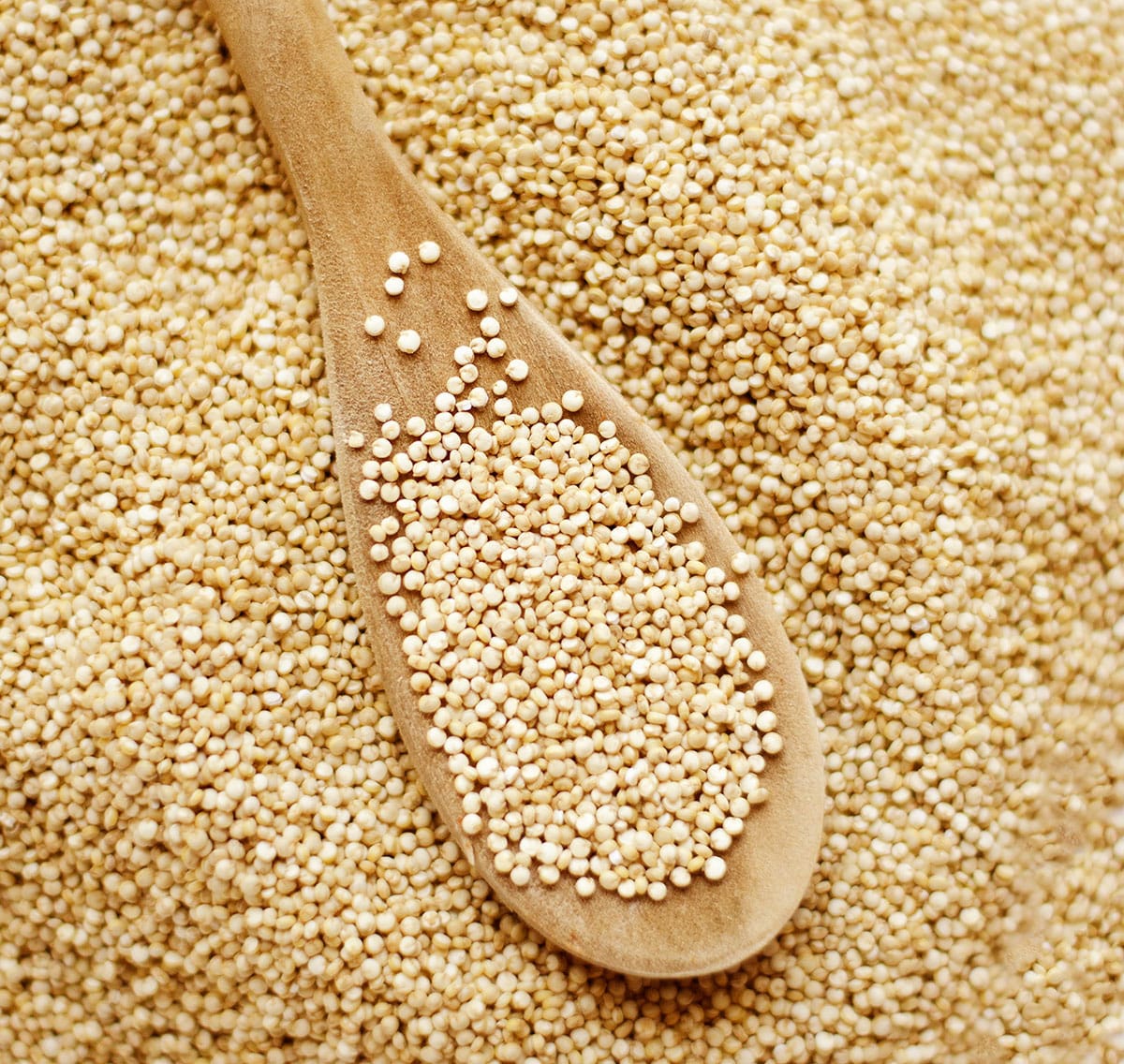
A lot of people associate quinoa with: hippies, vegans, health nuts, food fads. And I suppose it has risen pretty steeply in popularity recently. Heck, 2013 was named the International Year of Quinoa by the Food and Agriculture Organization. But quinoa goes way back thousands of years and is worth adding to your diet.
So after covering a whole range of recipe ideas with quinoa, from quinoa-based soup to quinoa breakfast to Mediterranean inspired quinoa salad, let’s dig into the quinoa 101’s! Here’s everything you need to know about cooking with quinoa (👉 here is how to cook quinoa!)
Quinoa pronunciation
It’s an odd word, we get it! The correct way to pronounce quinoa is “keen-wah”.
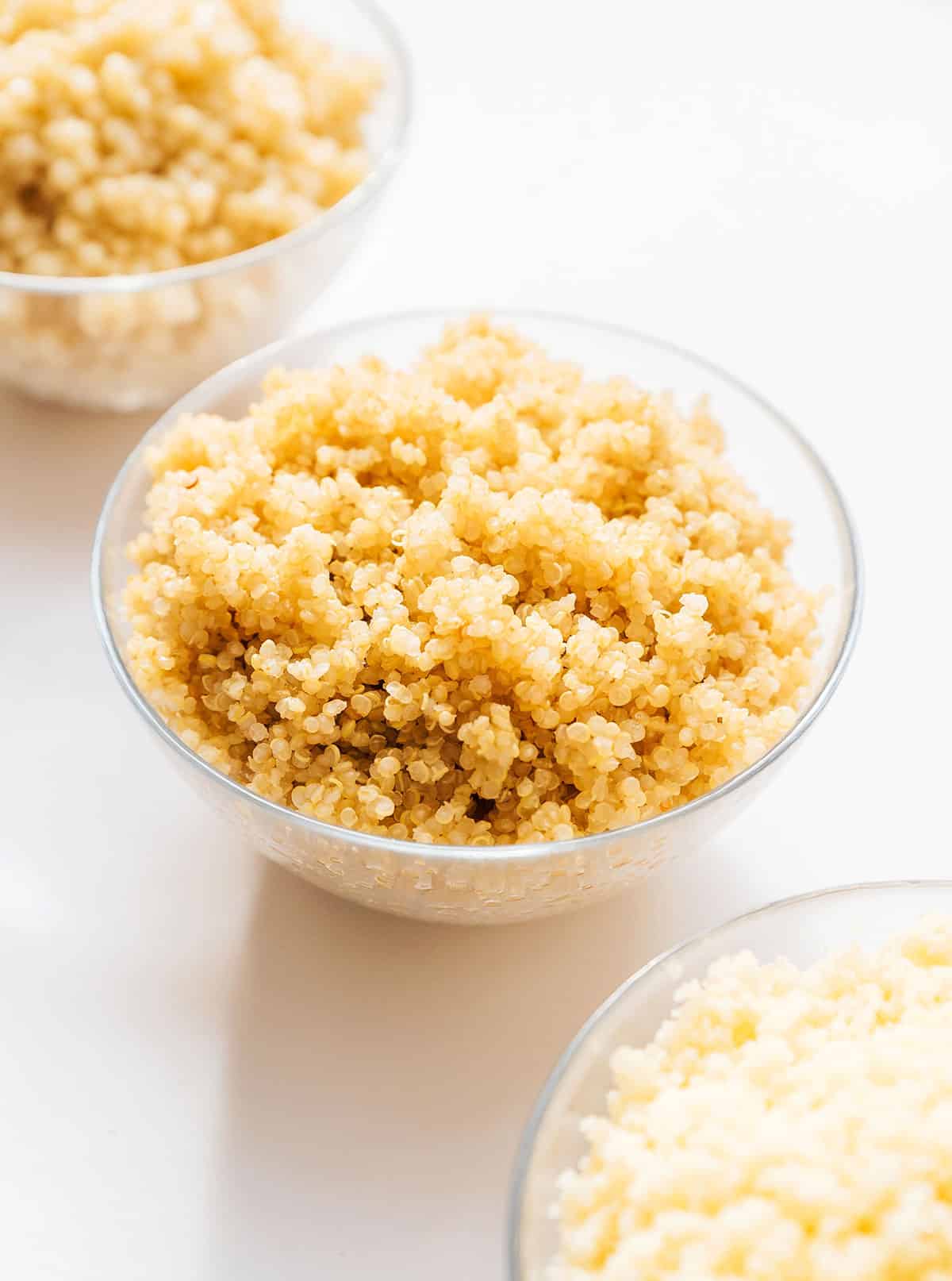
Where is quinoa from?
Quinoa originates in the Andean Regions of Peru and Bolivia where it adapted to grow under some un-bolivia-ble conditions (I had to). High altitudes, extreme temperatures, droughts…quinoa is one tough seed!
Yes, a seed. While we like to treat quinoa like a grain in cooking, it actually contains no grain at all (unlike our favorite quinoa substitute). The quinoa seed comes from a plant in the same family as spinach and chard. It’s more closely related to beets than it is to wheat!
And because it isn’t wheat, it’s got a lot of different (awesome) qualities. It cooks faster for one, an always-important characteristic for the inpatient cook as myself. It’s also super nutritious. I usually hesitate throwing around that name “superfood”, but it comes close to what one might define as a superfood.
Reader rating
“I had no idea that quinoa was such a power house of nutrition…thank you for your knowledge!!” —Marlene
What does quinoa taste like?
Quinoa has a mild, nutty flavor. Some describe it as having a slightly earthy taste. It is often compared to rice or couscous, but with a slightly firmer texture.
When cooked, quinoa retains a slightly crunchy texture with a delicate pop in each bite. This makes it a versatile ingredient that can be used in a variety of dishes, both savory and sweet. It’s commonly used as a base for salads, pilafs, and grain bowls, but it can also be used in soups, stews, and even desserts.
Overall, quinoa is appreciated not only for its taste, but also for its high nutritional value, making it a popular choice for those seeking a healthy and nutritious alternative to other grains.
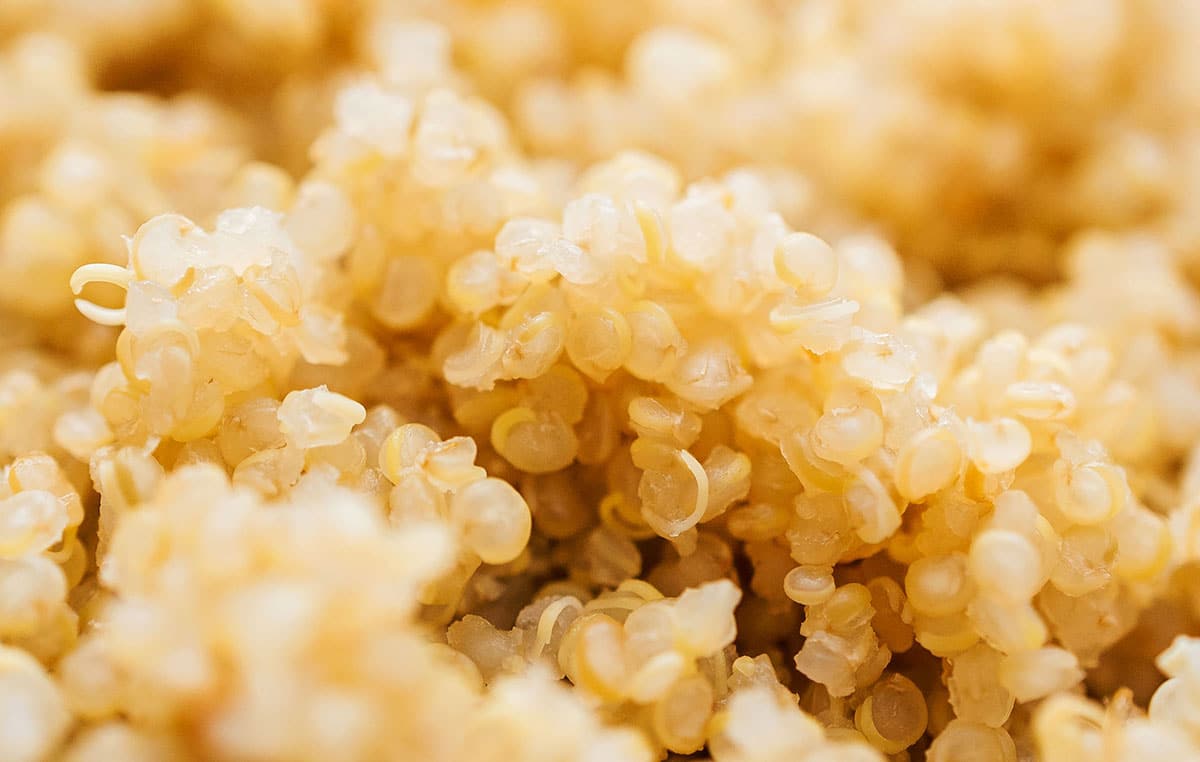
Quinoa Health Benefits
Is quinoa good for you? Yes! Packed with essential nutrients, quinoa is a great source of plant-based protein, containing all nine essential amino acids. It is also rich in dietary fiber, which promotes healthy digestion and helps maintain a feeling of fullness. The following nutrition data is per 1/2 cup of uncooked white quinoa (85g or about 1.5 cups cooked).
Calories in 1/2 cup of uncooked quinoa: 313
Quinoa isn’t necessarily low calorie, but that doesn’t mean it’s not a healthy addition to your diet!
Carbs in Quinoa: 54g
Quinoa is not considered low carb, so it would not be suitable for a low carb diet. Quinoa is not considered keto-friendly. While it is a nutritious food, it is relatively high in carbohydrates, which makes it incompatible with the strict carbohydrate restrictions of the ketogenic diet. Keto diets typically focus on consuming low-carbohydrate foods and higher amounts of fats.
Fiber: 6g
Quinoa is a great source of fiber, and has 24% of your Daily Value (DV). This means that quinoa can can make you to feel full, helping you to eat less and lose weight.
Protein: 12g
Quinoa is a good source of protein. Unlike most plant-based sources of protein, it’s a complete protein. This means it contains all 9 essential amino acids (the amino acids you need to obtain from food because your body cannot make them).
Fat: 5g
Quinoa contains some fat, though it is mostly unsaturated fat (the good kind).
39% Daily Value of Phosphorus
It also contain a good amount of phosphorus, the mineral that works with calcium to help build strong bones and teeth bones and teeth.
34% Daily Value of Folate
Quinoa is rich in folate, which is a water-soluble vitamin that helps make DNA & RNA.
21% Daily Value of Iron
For a vegetarian diet, any plant source with this much iron is a huge win! Quinoa is high in iron, which is a major component of hemoglobin, the protein that makes up red blood cells and carry oxygen around the body.
Is quinoa gluten free?
Yes, quinoa is gluten-free. It is a naturally gluten-free grain-like seed that can be safely consumed by individuals with gluten intolerance or celiac disease.
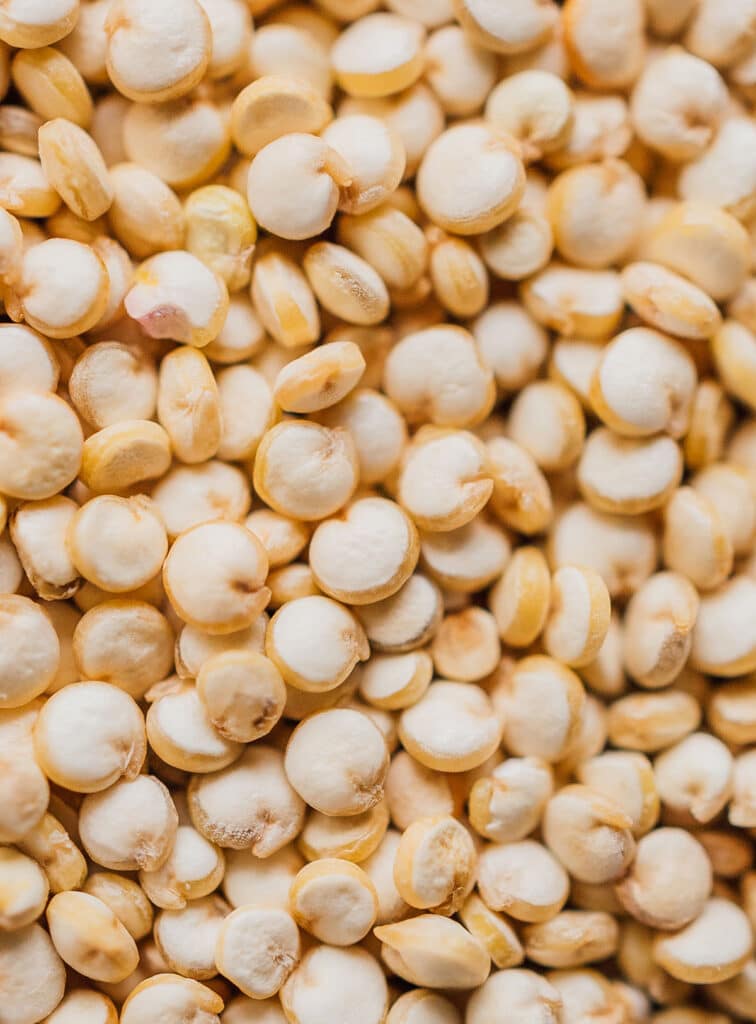
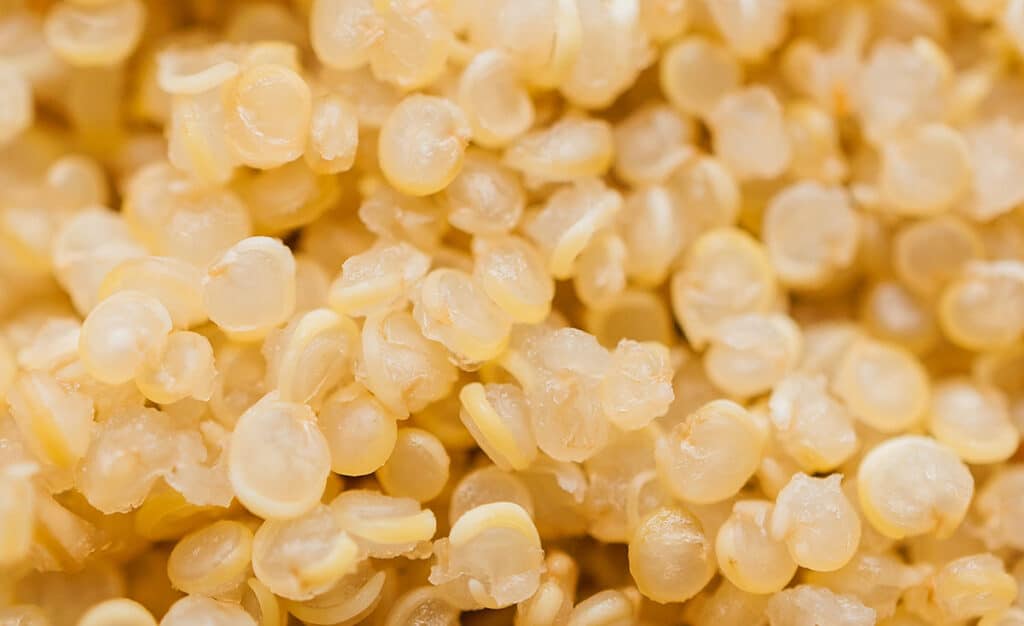
Where To Buy Quinoa
With its explosion in popularity, you can find quinoa in most groceries. The more traditional white quinoa can usually be found in the grains or bulk sections of supermarkets. Health food stores often offer a variety of quinoa options, including different colors and organic varieties.
Types Of Quinoa
There are a million and one different kinds of quinoa, but you’ll find a few main kinds in your grocery.
- White Quinoa: most common, a bit softer and more interchangeable with rice or other grains
- Red Quinoa: holds its shape well, great on salads or sprinkled on dishes for color contrast
- Black Quinoa: sweeter, earthier, bolder (but also fresh out of stock at my grocery so you won’t see it pictured here. Just imagine normal quinoa but like…black).
- Puffed Quinoa: Puffed quinoa is a type of quinoa that has been heated under high pressure until it “pops” or expands, resulting in a light and crunchy texture, similar to puffed rice.
Curious about the difference between quinoa and couscous? We’re breaking it all down in this post pitting quinoa vs couscous!
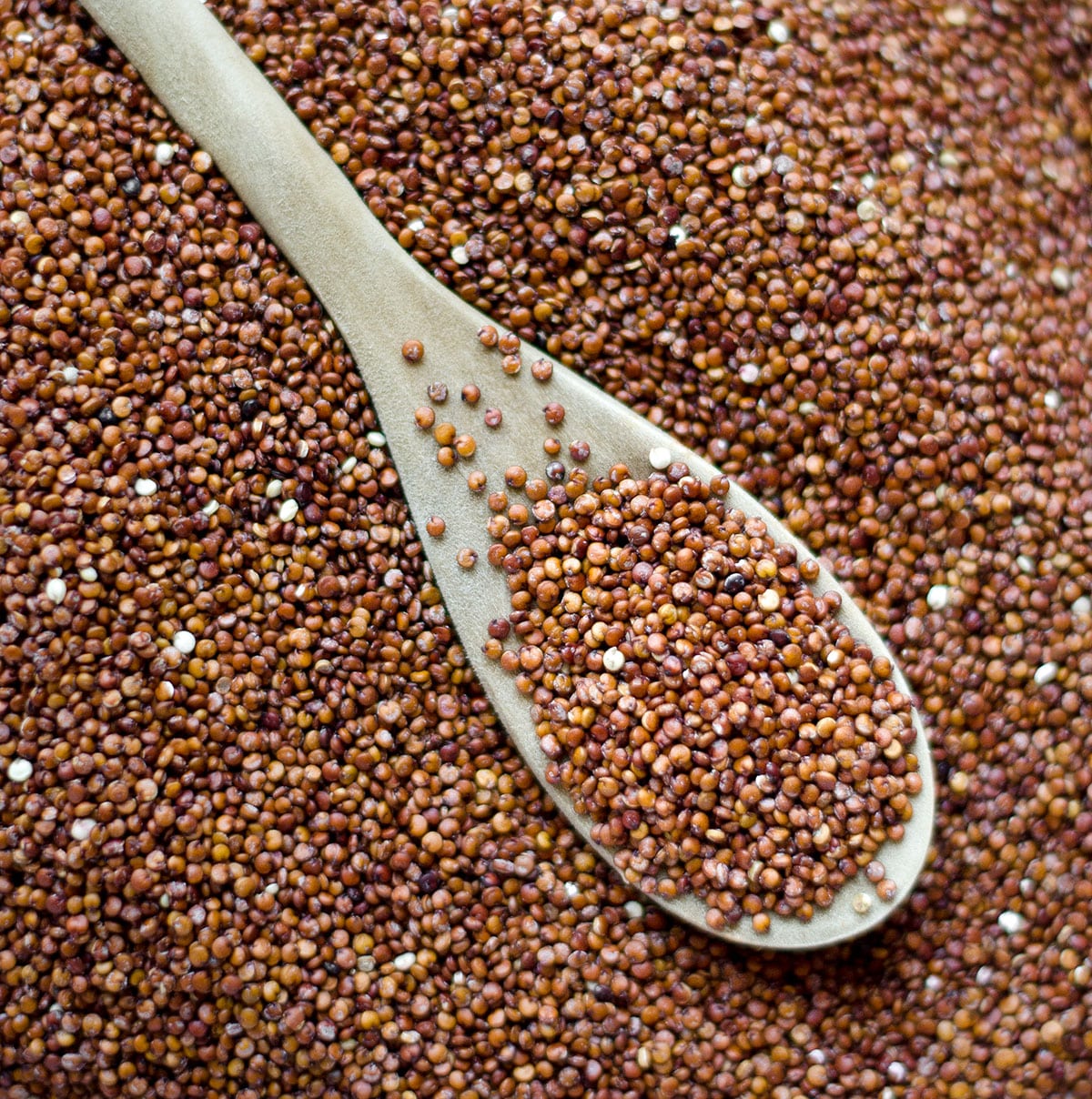
How to store quinoa
- Uncooked: Store uncooked quinoa in an airtight container in a cool, dark pantry for 2 to 3 years
- Cooked: Store cooked quinoa covered in the fridge for about a week, or in the freezer for a year
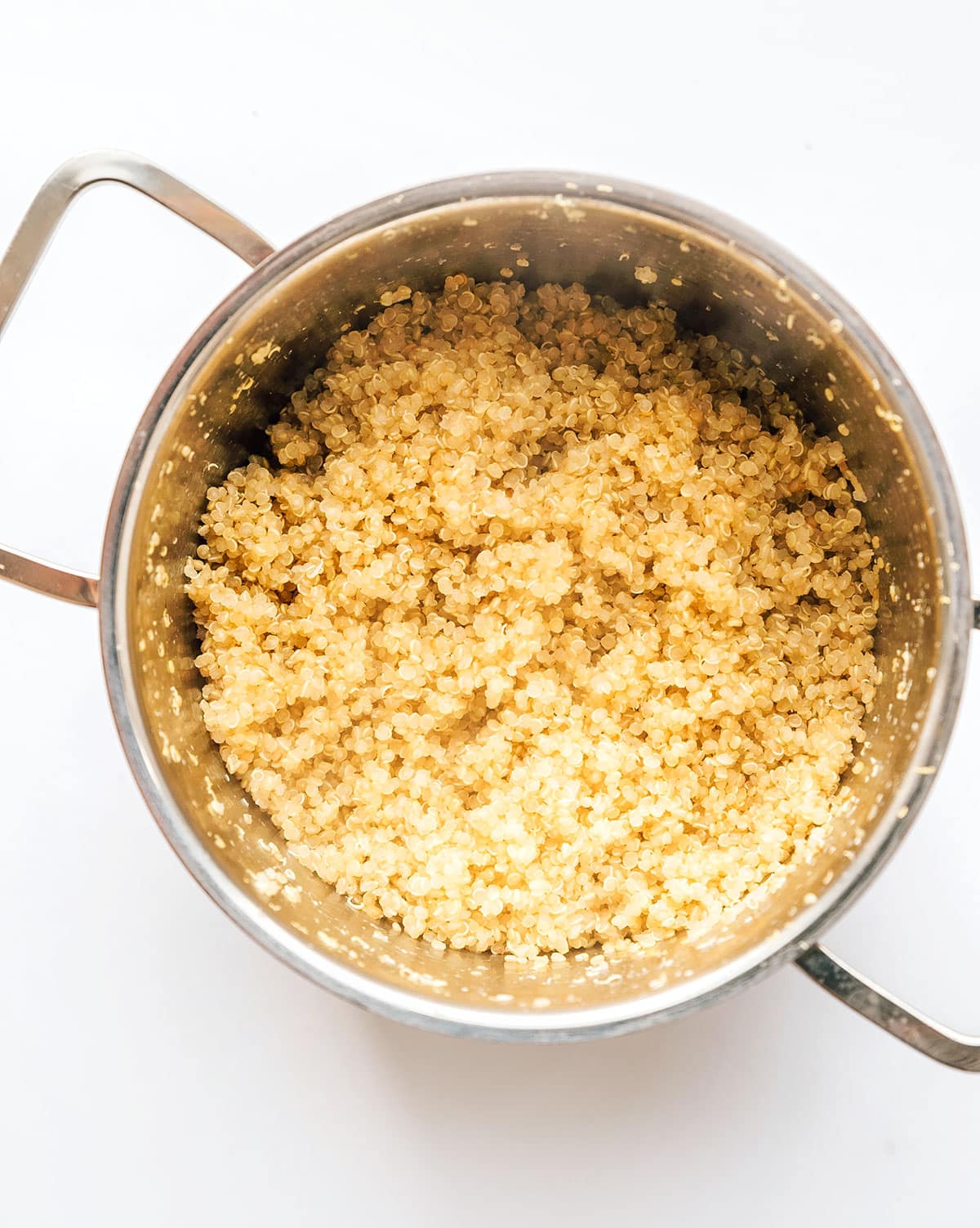
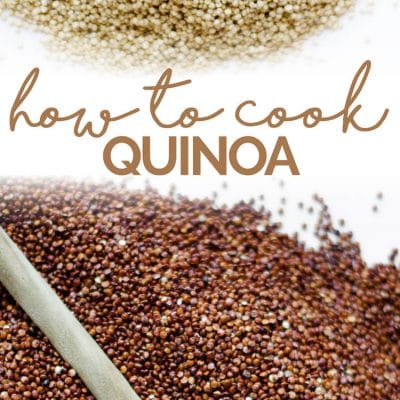
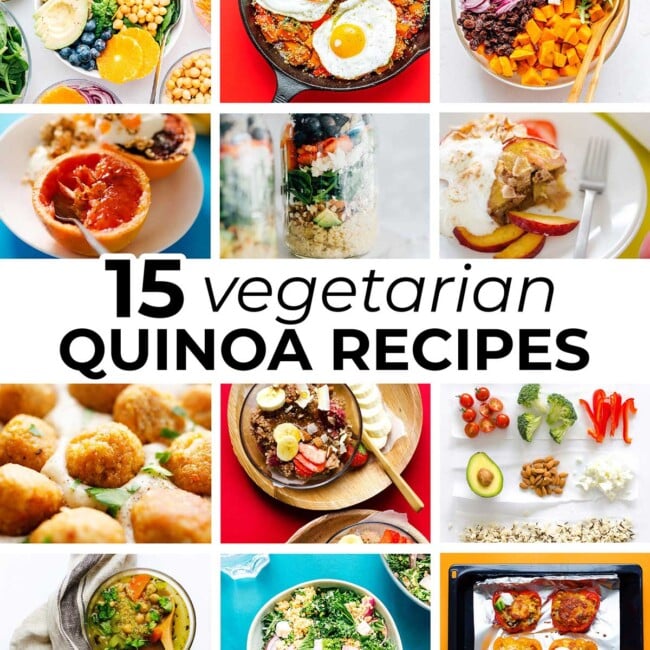
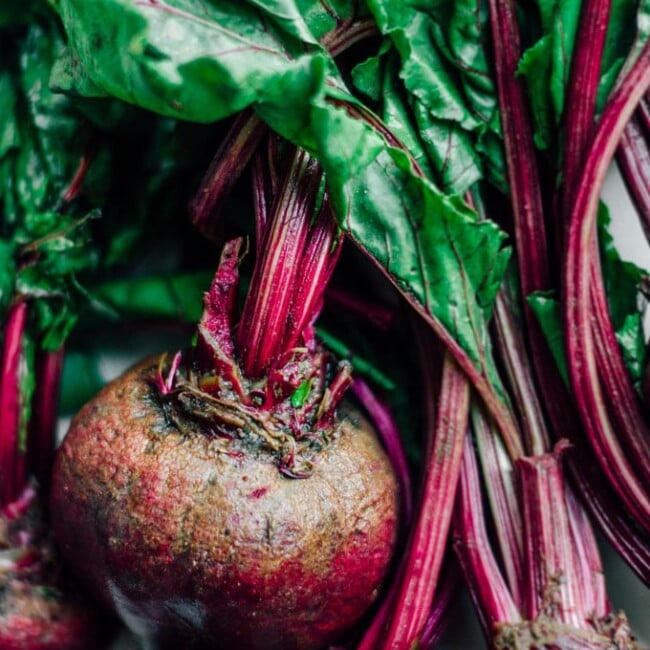
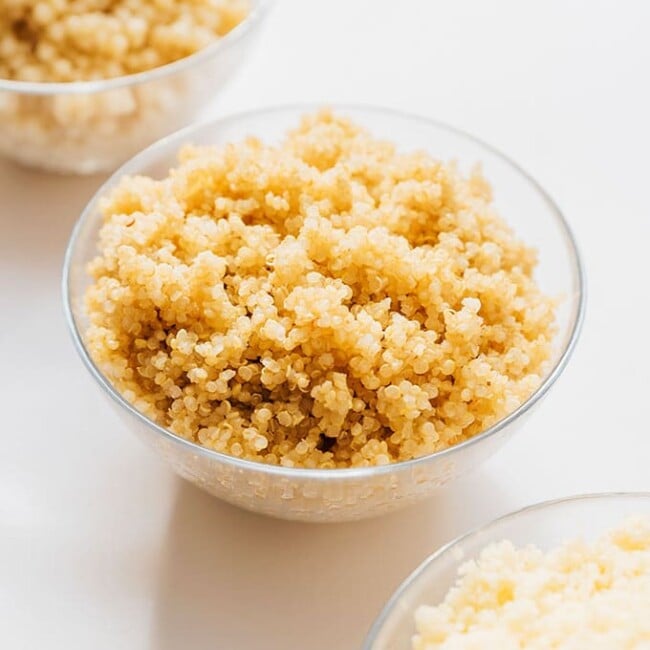
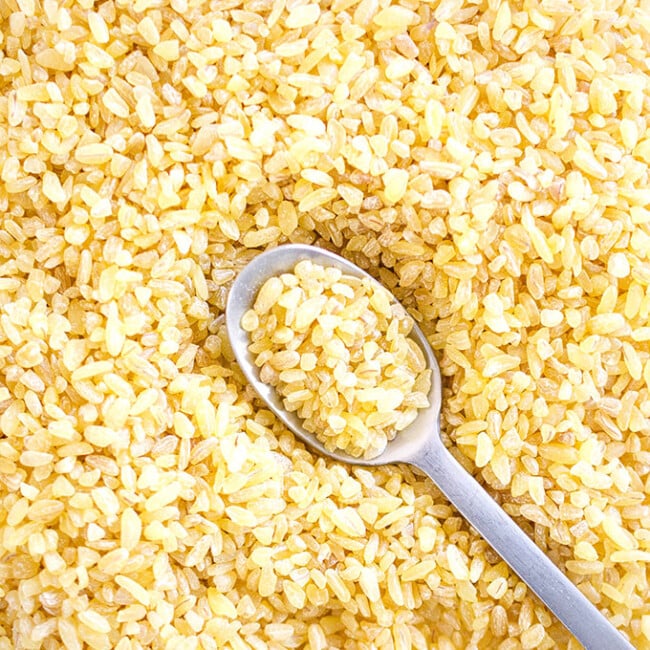
Drake Mitchell says
Thank you for a great fact and fun fill article. Your doing great things for us in Merca. Where we generally eat poorly.
Keep up the good work!
Erna solognier says
I am diabetic can i eat quinoa ?
Sarah says
Quinoa could be a part of your healthy diet, but consult your doctor for any major ingredient changes! 😀
Gordon Larsen says
I have a question or concern about the removal of the saponin from the quinoa seeds. My goal is to create a dry soup mix consisting of a variety of beans, quinoa, dried vegetables, and seasonings. Then the intention is to package these soup mixes along with an oxygen absorber for long term storage. However, for this to work the saponin needs to be removed before packaging and storage. So how do I remove the saponin before packaging, but yet package it dry?
Thank you!
Gordon Larsen
Sarah Bond says
Hi Gordon! I would probably rinse well then let is air dry for a few days to ensure all of that water is out of the quinoa before you package!
MARLENE R COVILLE says
I had no idea that Quinoa was such a power house of nutrition…thank you for your knowledge!!